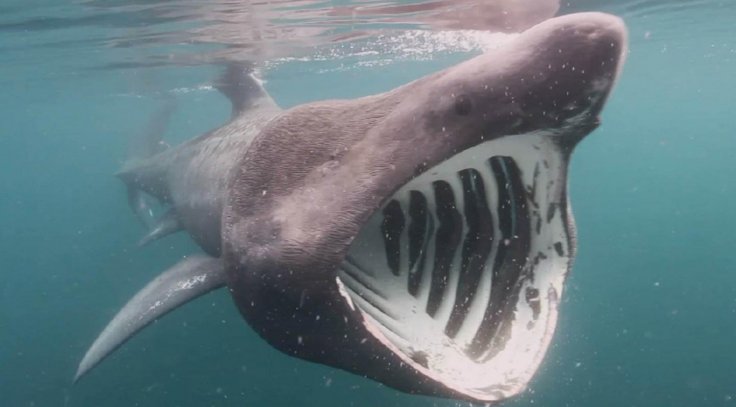
Hundreds of basking sharks spotted swarming off the northeastern US coast have surprised experts after an aerial survey revealed their massive existence.
Though individual sightings are fairly common, seeing large groups is not, as groups of basking sharks ranging from as few as 30 to nearly 1,400 individual animals have been observed aggregating in waters from Nova Scotia to Long Island.
A research study published in the Journal of Fish Biology analyzed aerial survey data obtained between 1980 and 2013, on groups of at least 30 sharks. "These aggregations occurred in summer and autumn months and included aggregation sizes of up to 1,398 individuals, the largest aggregation ever reported for this species," the researchers revealed in their paper.
The researchers found the aggregations occurred in summer and fall when sea surface temperatures varied between 55 and 75 degrees F (13 to 24 degrees C). The group had many young sharks, suggesting that the group was feeding on zooplankton and not aggregating for mating, said Leah Crowe, a field biologist at NOAA's Northeast Fisheries Science Service, and the study's lead author.
The animals may be aggregating to draft off each other for more efficient feeding given the immense drag from having their mouths open, suggested the study. The fierce-looking basking sharks can grow up to 32 feet long, though they are not a threat to humans. The reason why they congregate has not been clearly determined, although it is attributed to feeding, socializing, and or courtship in other shark species.
"Photogrammetry, the use of photographs to measure objects, has provided estimated lengths of animals at the surface and allowed us to classify animals in the aggregation as likely juveniles or mature adults," said Crowe, who works at the NEFSC's Woods Hole Laboratory in Woods Hole, Mass.
Given the apparent presence of juveniles and an abundance of zooplankton on the continental shelf at the time of the event, the study authors say it is likely foraging a role in the formation of such huge aggregation.
Basking Sharks are second largest fish in size, growing as long as 32 feet and weighing more than five tons. They are highly migratory, slow-moving animals often sighted close to the surface with their large mouths open to filter zooplankton from seawater. They and the larger whale shark, along with the megamouth shark, are the three shark species that eat plankton.
Studies show that basking sharks prefer waters between 55 and 68 degrees F and their reproductive cycle is not well understood. "Although the reason for these aggregations remains elusive, our ability to access a variety of survey data through the North Atlantic Right Whale Consortium Database and to compare information has provided new insight into the potential biological function of these rare events," Crowe said.









